
|
Extracting DNA from Neanderthal Bones
|
|
|
|
|

|
One way scientists learn why we are the way we are is by studying our DNA—the chemical code for life. Wouldn’t it be great if we could also study the DNA of our extinct ancestors?
|
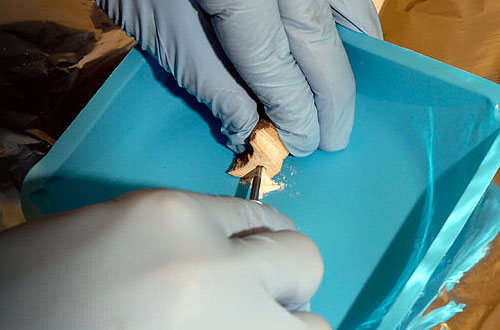
|
Actually, we can. Under the right conditions, DNA can persist inside fossilized bones for thousands of years. Here, they begin the extraction of DNA from a 38,000-year-old Neanderthal bone. |

|
This process, called an assay, is a test to see if there’s any usable DNA inside this Neanderthal femur. If so, it’s probably in the middle of the bone, protected from the elements. |
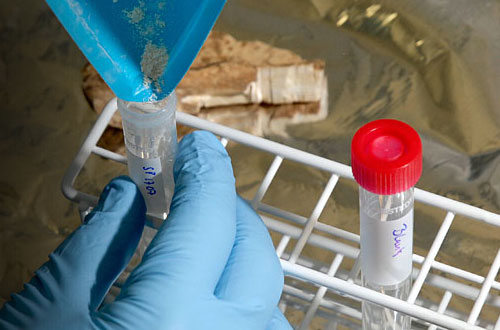
|
We drill into the bone and collect the bone powder. |
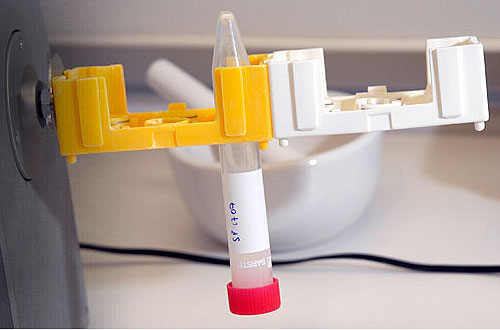
|
We soak the bone powder overnight in an extraction buffer, a substance that melts the bone and collagen and releases the DNA into the solution. |
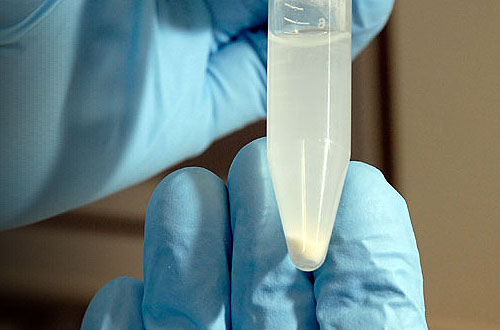
|
Now that the DNA is in solution, we need to get it out. To do that, we do what’s called a silica extraction.
|
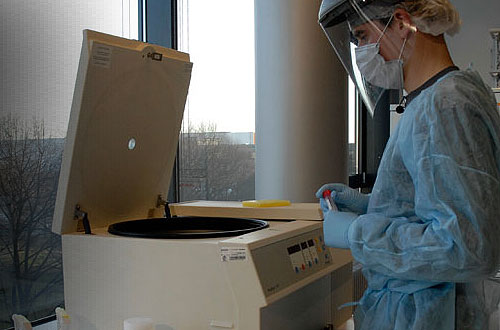
|
We add silica—basically, tiny glass particles—which attach to the DNA. Then we use a centrifuge to spin the solution so the glass particles (with DNA attached) collect together into a pellet.
|

|
Then we use another solution to wash the concentrated DNA off the pellets. |

|
Now we have a small drop of liquid containing the DNA—in other words, a DNA extract. |
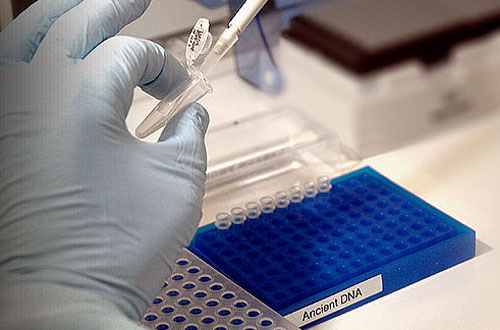
|
Now that we have a DNA extract, we see if it actually contains Neanderthal DNA by testing the sample for a known segment of the Neanderthal genome.
|
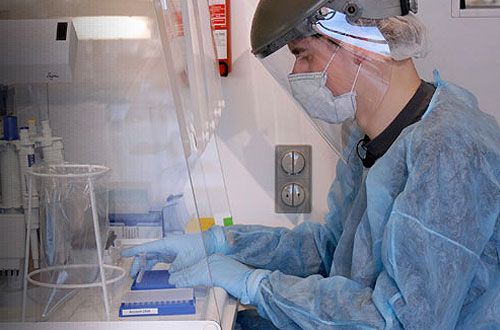
|
To do this, we add primers (markers that pinpoint this special Neanderthal-only region), and then put the extract into a PCR machine. |
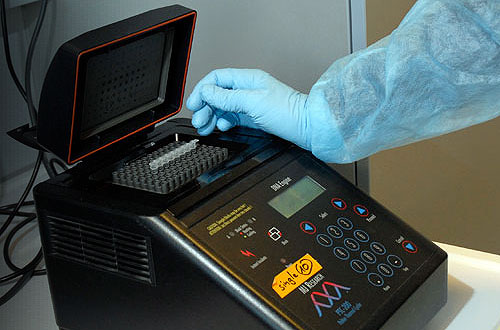
|
In two hours, this machine will make lots and lots of copies of this special DNA segment, if it's there.
|
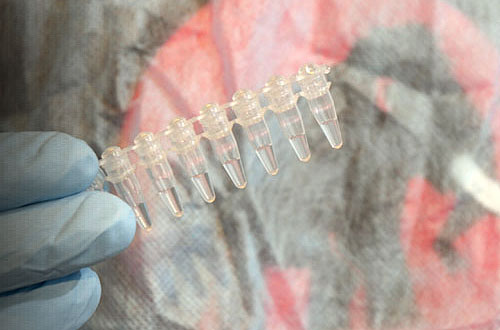
|
We use many vials as a control, to double check our work. |
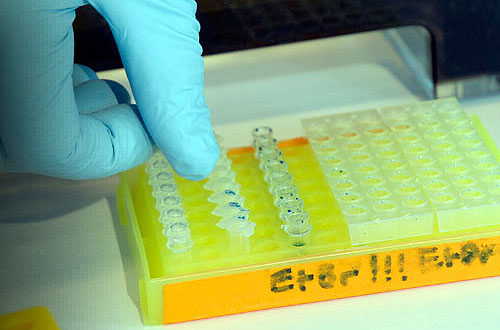
|
We’re hoping these vials contain lots of copies of a Neanderthal-only segment of DNA.
|
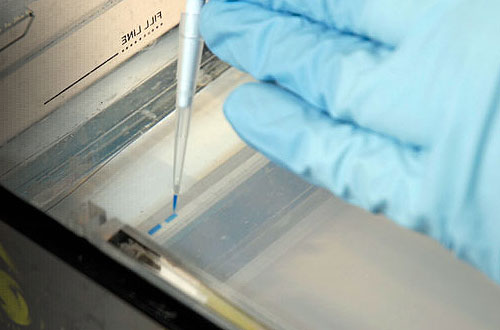
|
To find out if they do, we “run a gel”—that is, put the solution from one of the vials into a tray of gelatinous stuff (agar, from seaweed) and let electricity sort the DNA fragments according to size.
|
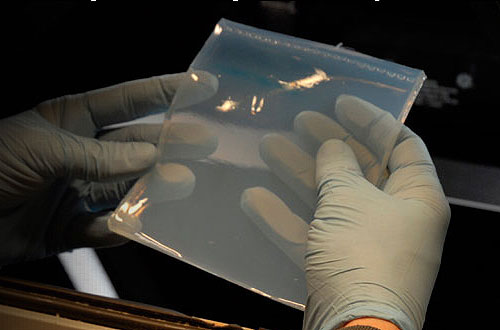
|
Once the DNA fragments have been sorted, we look at them under ultraviolet light. |
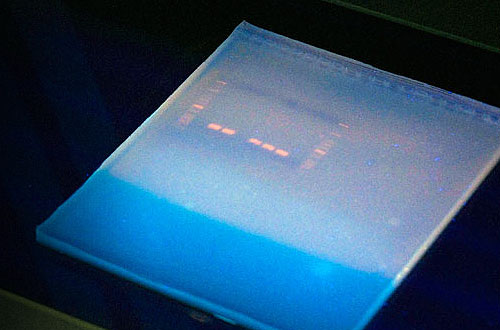
|
In this case, we see a series of bright bands that correspond to a fragment that’s 80 base pairs long—bands we only see for Neanderthal DNA. The extraction was successful! |
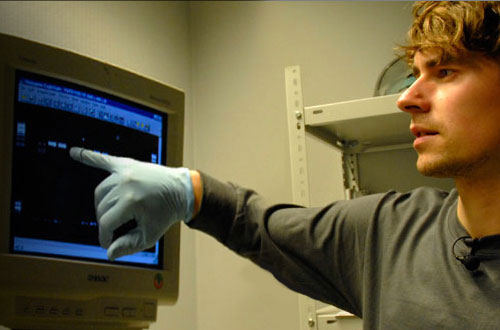
|
Now that we know there’s Neanderthal DNA in our extract, we may want to use it to do other experiments. |
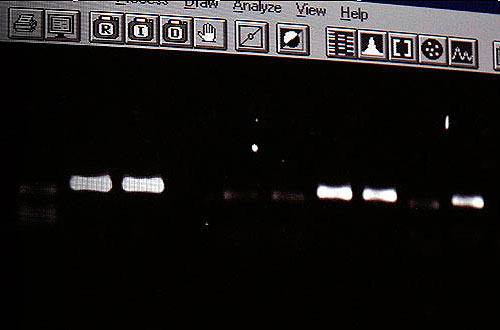
|
For example, we might decide to sequence the ancient DNA (that is, “read” it by identifying each and every chemical component) and then compare it to our own. |
|
|
|
|
Special thanks to: Dr. Johannes
Max Planck Institue for Evolutionary Anthropolgy |
|